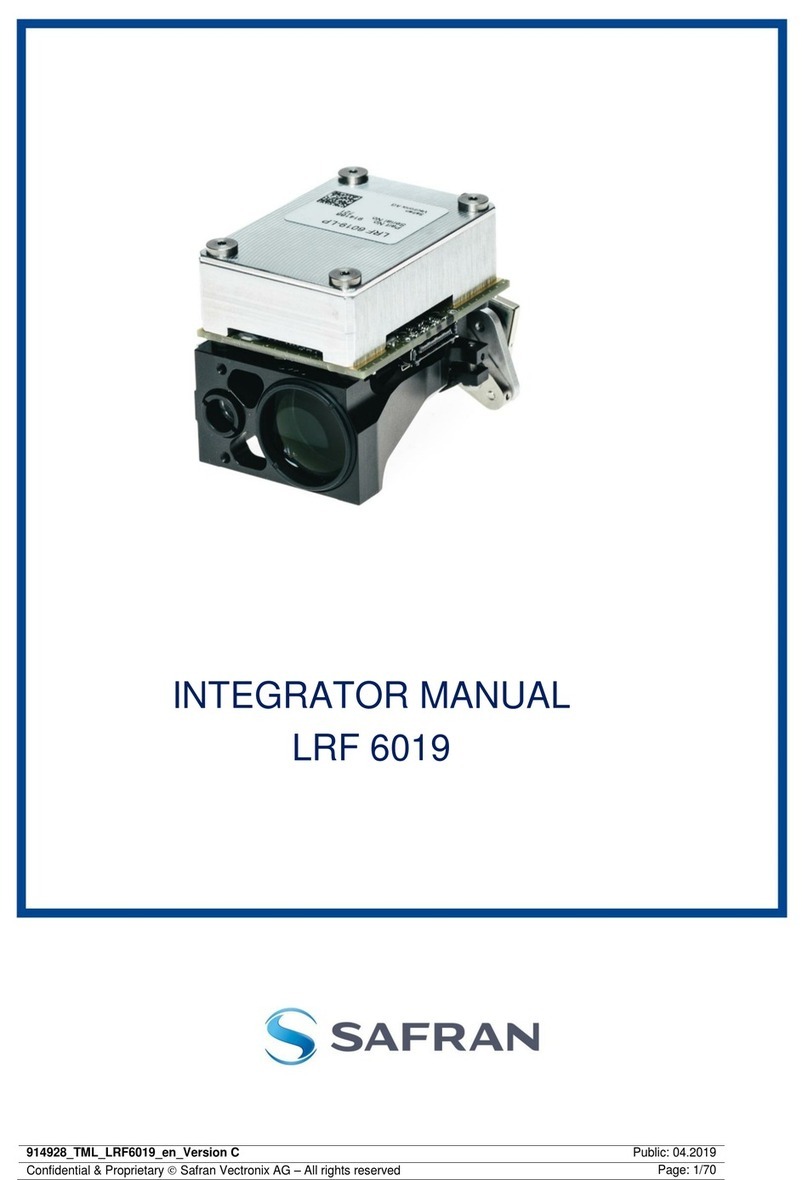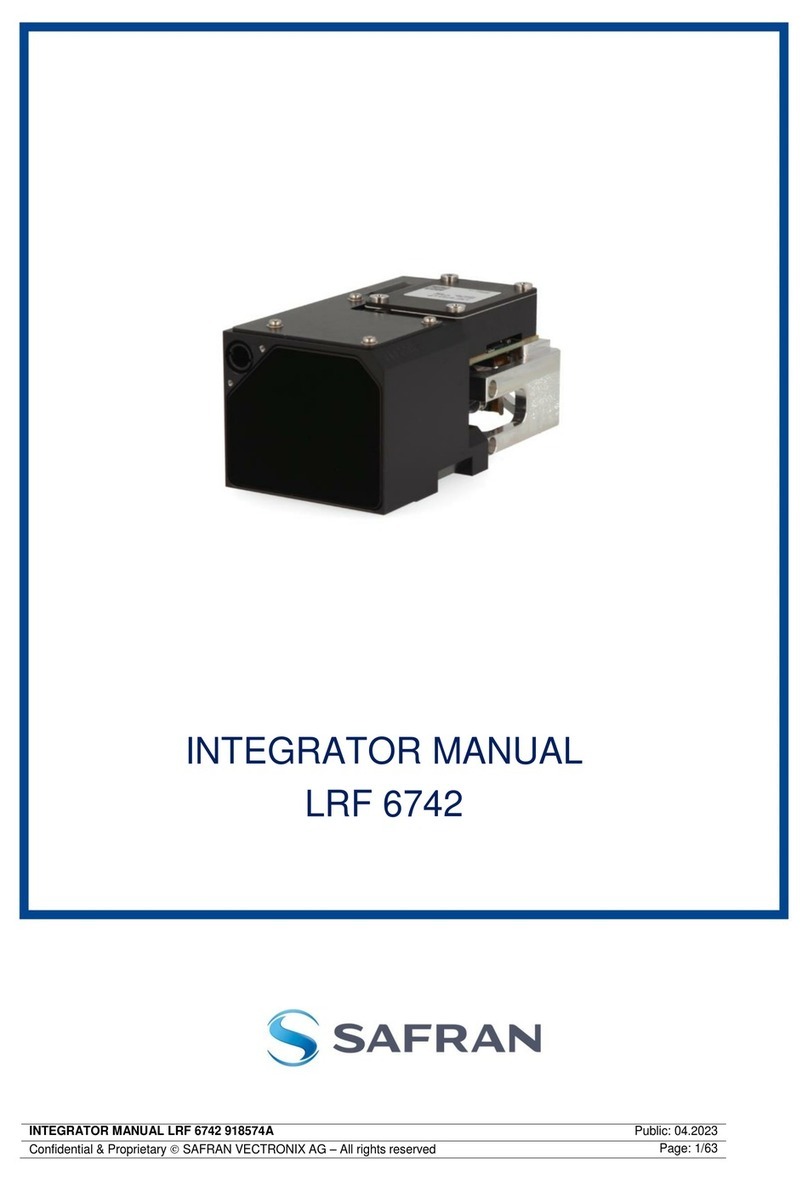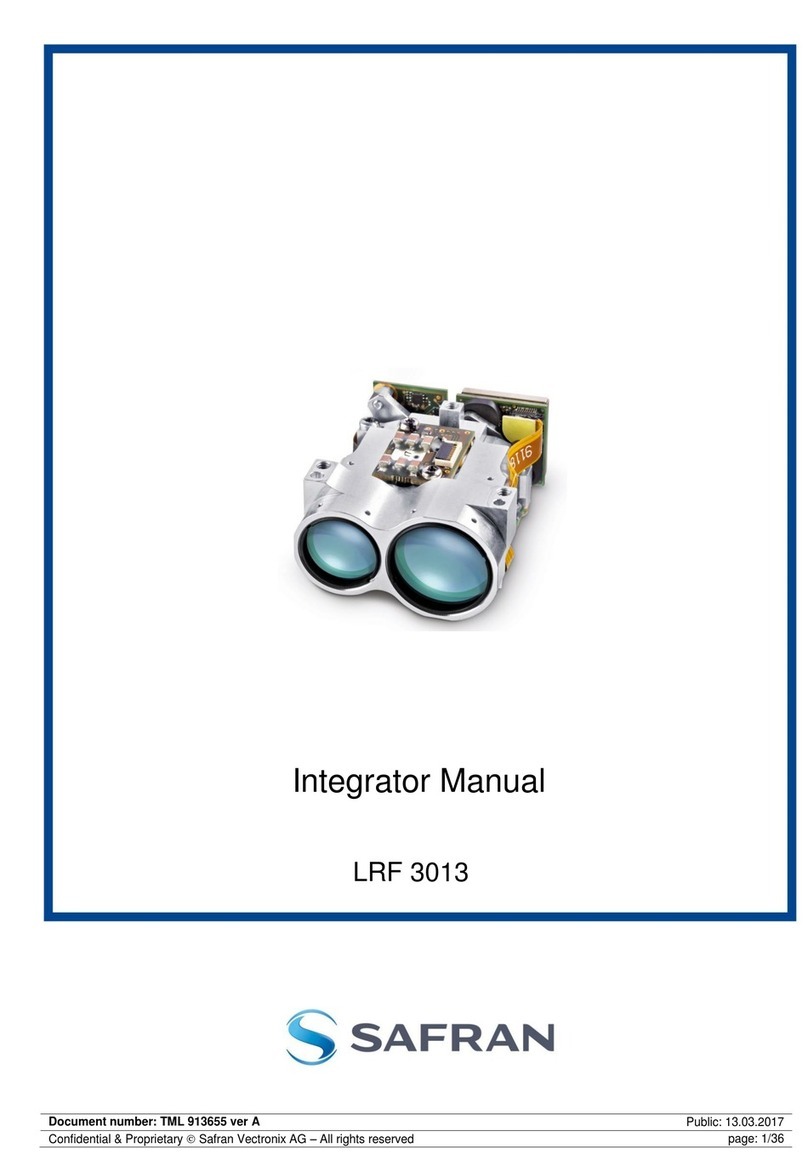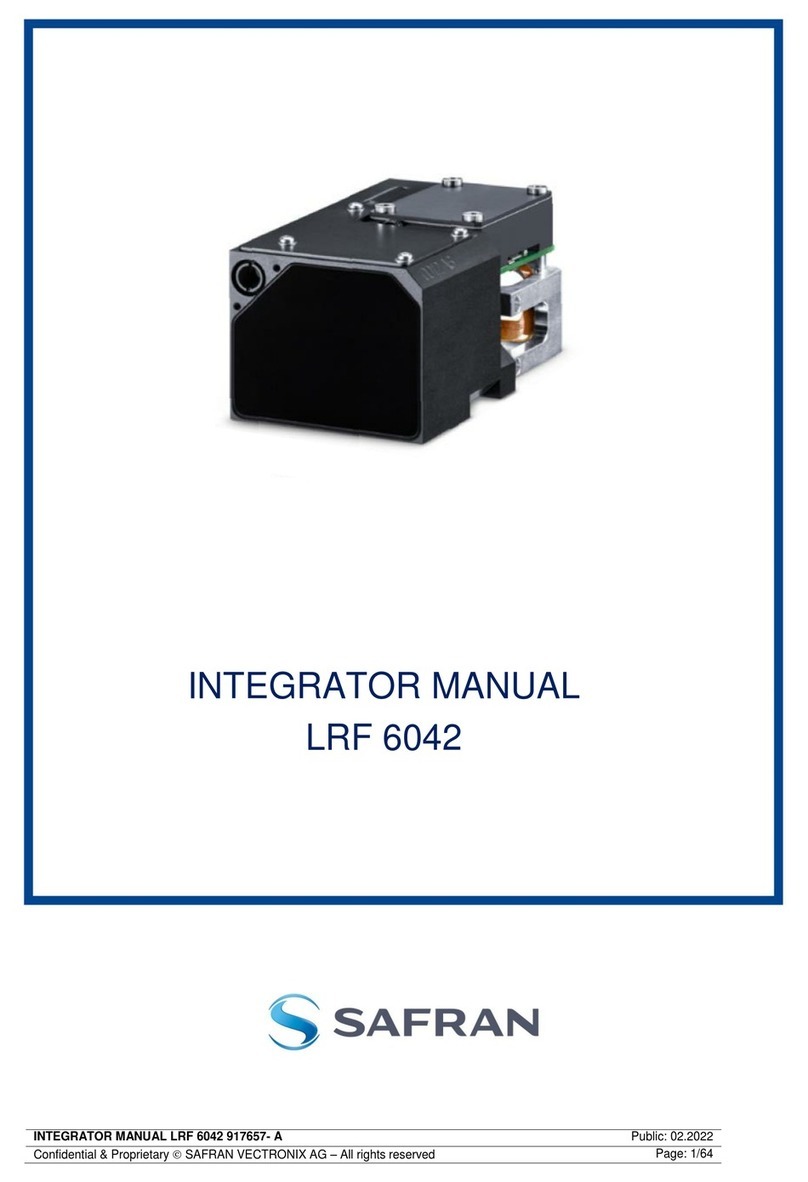
LRF 7047- Integrator Manual
914929_TML_LRF7047_en_Version B
Confidential & Proprietary Safran Vectronix AG – All rights reserved
6SW Interface ....................................................................................................................................... 38
6.1 Operating modes ........................................................................................................................ 38
6.2 Communication Protocol ............................................................................................................. 38
6.3 Command structure .................................................................................................................... 39
6.3.1 Definition ................................................................................................................................. 39
6.3.2 Message format ...................................................................................................................... 39
6.4 Timing / Power on ....................................................................................................................... 41
6.5 Operational Commands .............................................................................................................. 42
6.5.1 Distance measurement >LM,Md,x*<CS><CR > ..................................................................... 42
6.5.2 Fake Range Request >LM,Mf,x*<CS><CR> .......................................................................... 43
6.5.3 Laser continuous low power mode >LM,Tl,x*<CS><CR> ...................................................... 44
6.5.4 Laser pointer command >LM,Rp,x*<CS><CR> ..................................................................... 45
6.5.5 Laser pointer arm command >LM,Lp,x*<CS><CR> ............................................................... 46
6.5.6 Operating mode selection >LM,Op,x*<CS><CR> .................................................................. 47
6.5.7 Block Range Request >LM,Mb,x*<CS><CR> ........................................................................ 48
6.5.8 Continuous Range Request >LM,Mt,x*<CS><CR> ............................................................... 49
6.5.9 Error Codes ............................................................................................................................. 50
6.6 Servicing commands................................................................................................................... 51
6.6.1 Set LRF module baud rate >LM,Br,x*<CS><CR> .................................................................. 51
6.6.2 Version, software and module type request >LM,Iv*<CS><CR> ........................................... 52
6.6.3 Set range gate min >LM,Gl,x*<CS><CR> .............................................................................. 53
6.6.4 Set range gate max >LM,Gh,x*<CS><CR> ............................................................................ 54
6.6.5 Get current range gate settings >LM,Ig,x*<CS><CR> ........................................................... 55
6.6.6 Reset LRF module to default settings >LM,Rd*<CS><CR> ................................................... 56
6.6.7 Timestamp activation >LM,At,x*<CS><CR> .......................................................................... 57
6.6.8 Get time stamp >LM,It*<CS><CR> ........................................................................................ 58
6.6.9 Range commands with activated timestamp .......................................................................... 59
6.7 Test commands .......................................................................................................................... 60
6.7.1 IBIT (Initiated built-in test) >LM,Tb,1*<CS><CR> .................................................................. 60
6.7.2 PBIT (Power built-in test) >LM,Tb,2*<CS><CR> ................................................................... 61
7Maintenance ....................................................................................................................................... 62
7.1 Cleaning ...................................................................................................................................... 62
7.2 Service Levels ............................................................................................................................. 62
8LRF Interface Tools ........................................................................................................................... 63
8.1 LRF Interface Kit ......................................................................................................................... 63
8.2 Interface Cable ............................................................................................................................ 63
9Appendix ............................................................................................................................................ 64
9.1 System Connector ...................................................................................................................... 64
9.2Mechanical Interface Drawing .................................................................................................... 66
9.3 Reference design for Transmitter and receiver lenses ............................................................... 68
9.4 Reference design for connector .................................................................................................. 69
9.5 UTF-8 ASCII Table ..................................................................................................................... 70
9.6 Abbreviations .............................................................................................................................. 71































